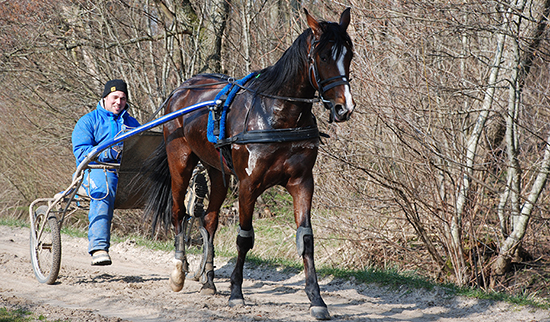Poor performance in the Danish horse population
Principal Investigators: Sanni Hansen, Julie Fjeldborg, Lise Berg, Charlotte Hopster-Iversen, Sofie Kjeldsen and Rikke Buhl

Background
Poor performance in the equine athlete can be related to the respiratory, cardiovascular and musculoskeletal system. Often the cause of reduced performance is multifactorial and several examinations are needed.
In Denmark, horses are used for many purposes including show jumping, dressage, endurance, vaulting, military and racing. These are all disciplines that requires the horse to be in good physical condition without any disease. Horses with poor performance often cause frustration to the owner and trainer, especially when the symptoms are subtle or intermittent. Therefore thorough and systematic examinations are necessary to elucidate the cause of reduced performance. The past years of research has helped to develop more sensitive diagnostic procedures and more advanced equipment, which also allows the procedures to be performed in the horses own training environment.
Little is known about breed specific causes of poor performance, and therefore research of different horse populations are necessary to help future examiners.
Aim
This project aim is to investigate causes of poor performance, in a wide population of Danish horses, related to respiratory, cardiovascular and muscular diseases. The main focus of the project will be to elucidate the possible correlation between intermittent cardiac arrhythmias and the performance level of the horse.
Methods
Horses included in this study will be of various breeds including Warmbloods, Standardbreds and Icelandic horses. All horses will undergo a standardized clinical examination, blood analysis and lameness exam to exclude lame horse. Based on the history and clinical examination each horse will undergo one or more of the following examinations related to specific organ systems.
The cardiac system will be examined by use of 2D echocardiography, atrial mapping including endocardial biopsy and ECG monitoring. A novel method of monitoring ECGs, tested by this research group, is the use of loop-recorders that will be inserted subcutaneously allowing to monitor any intermittent arrhythmias. This method can be used to observe the long term ECG in the horses own environment and during routine training.
Respiratory causes of reduced performance will be diagnosed by use of bronchoalveolar lavage, tracheal aspirate and airway endoscopy. The horses will also undergo an exercise test, where overground endoscopy will be used to observe any changes in the upper airway.
Symptoms of muscular diseases can be unspecific, but by use of muscle biopsies, blood samples and acoustic myography, we will search for the most sensitive and minimal invasive procedure to diagnose muscular diseases.
Results
The study is finished and the results of the study is available to the public free of charge and can be seen be following the link here:
- A pdf of the overall results can be seen here
- An ECEIM poster with the title: Chronic idiopathic myopathy in Icelandic horses with a syndrome characterised by paresis and poor performance can be seen here
Funding
This project is generously funded by Hesteafgiftsfonden year 2021.
![]()
